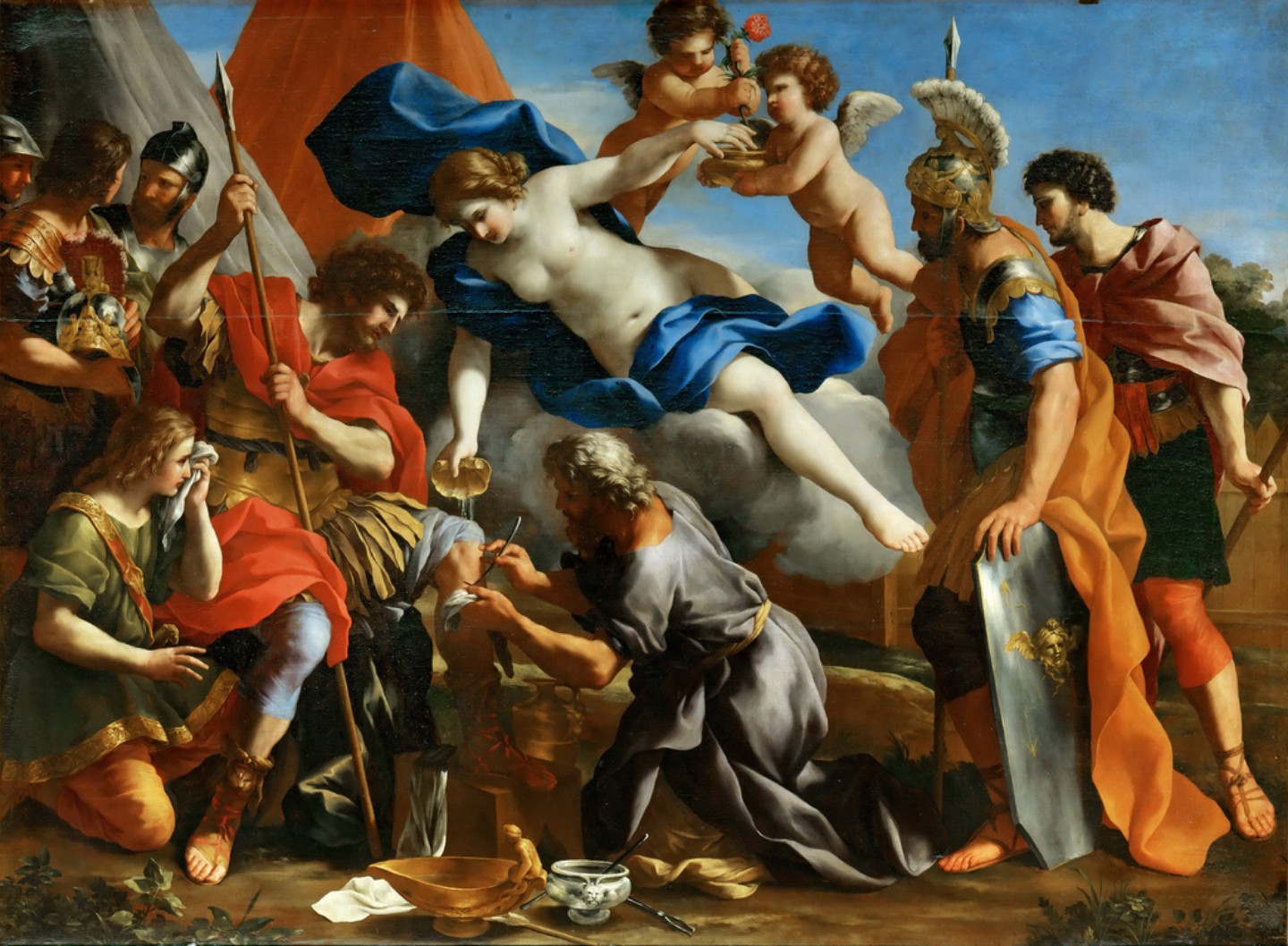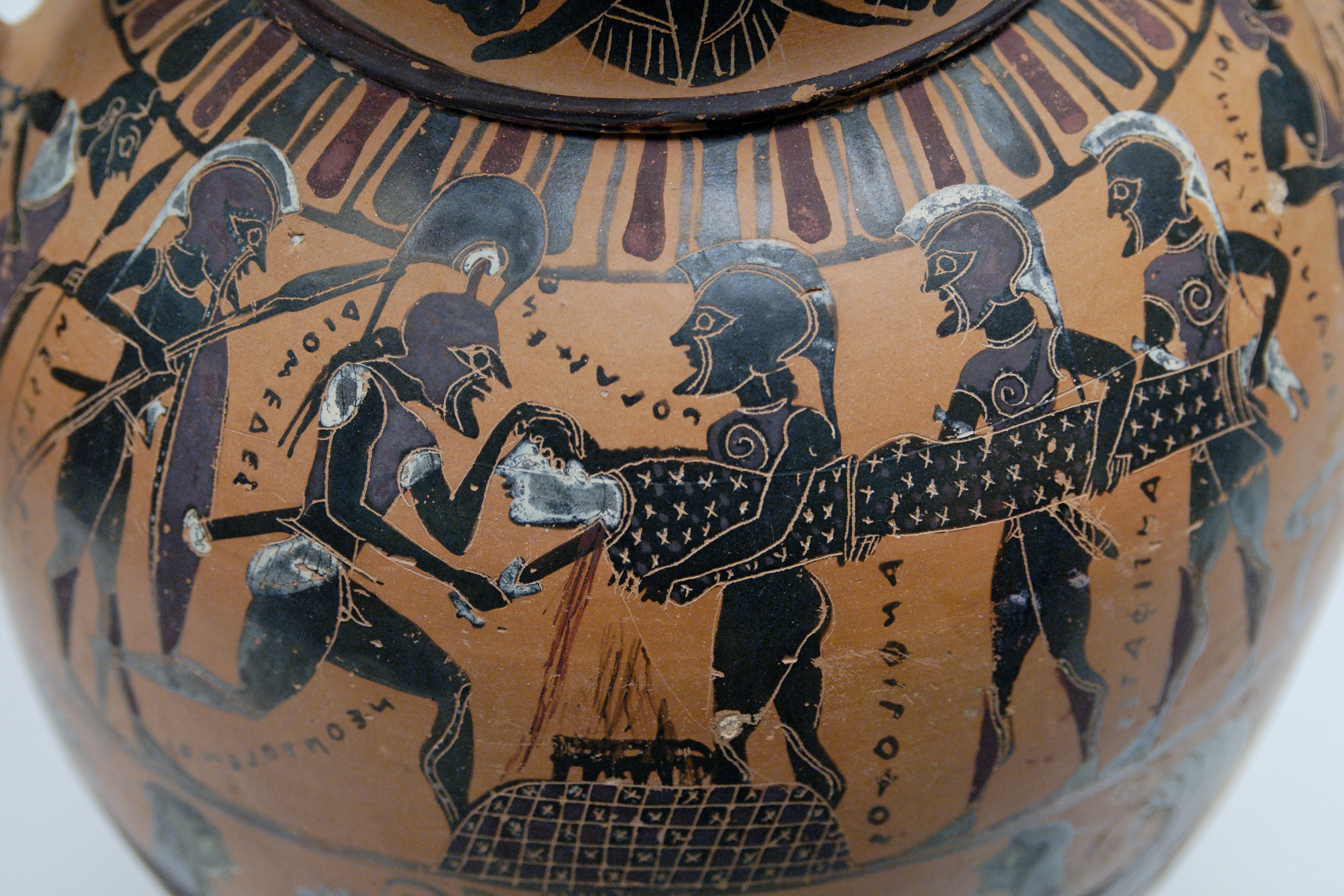|
The Sacrifice Of Polyxena (Giovanni Francesco Romanelli)
''The Sacrifice of Polyxena'' is a 17th-century painting by Italian artist Giovanni Francesco Romanelli. Done in oil on canvas, the painting depicts the death of Polyxena, a captive Trojan princess sacrificed to appease the ghost of the Greek hero Achilles, who had been killed by the Trojans. The painting is in the collection of the Metropolitan Museum of Art, in New York. See also *The Sacrifice of Polyxena (Charles Le Brun) ''The Sacrifice of Polyxena'' is a mid 17th century painting by Frenchman Charles Le Brun. Done in oil on canvas, the painting depicts the sacrifice of Polyxena, a Trojan princess killed to appease the ghost of the Greek hero Achilles, who had die ... - a contemporary painting of the same title and concerning the same subject. References {{DEFAULTSORT:Sacrifice of Polyxena, The Paintings in the Metropolitan Museum of Art 17th-century paintings Italian paintings ... [...More Info...] [...Related Items...] OR: [Wikipedia] [Google] [Baidu] |
Giovanni Francesco Romanelli
Giovanni Francesco Romanelli (Viterbo, 1610Baldinucci claims the date is May 14, 1617.– Viterbo, 1662) was a major Italian people, Italian painter of the Baroque period, celebrated for his use of bright, vivid colors and also for his clarity of detail. Many of his works are on display in the Louvre. Biography Romanelli was trained in Rome in the studio of Pietro da Cortona, the leading painter of his day. Born in Viterbo to Laura de Angelis and Bartolomeo Romanelli, he went to Rome at age 14 to study to become an artist, and within a few years became part of the household of Cardinal Francesco Barberini (1597–1679), Francesco Barberini. He was a pupil in the painting studio of Pietro da Cortona, the leading painter of his day, but the two eventually quarreled and so Romanelli left. In 1639 he was elected director of the prestigious Academy of Saint Luke. With the death of Urban VIII and the accession of Innocent X, the Barberini family fell from favour and Romanelli's patr ... [...More Info...] [...Related Items...] OR: [Wikipedia] [Google] [Baidu] |
Metropolitan Museum Of Art
The Metropolitan Museum of Art of New York City, colloquially "the Met", is the largest art museum in the Americas. Its permanent collection contains over two million works, divided among 17 curatorial departments. The main building at 1000 Fifth Avenue, along the Museum Mile on the eastern edge of Central Park on Manhattan's Upper East Side, is by area one of the world's largest art museums. The first portion of the approximately building was built in 1880. A much smaller second location, The Cloisters at Fort Tryon Park in Upper Manhattan, contains an extensive collection of art, architecture, and artifacts from medieval Europe. The Metropolitan Museum of Art was founded in 1870 with its mission to bring art and art education to the American people. The museum's permanent collection consists of works of art from classical antiquity and ancient Egypt, paintings, and sculptures from nearly all the European masters, and an extensive collection of American and modern ... [...More Info...] [...Related Items...] OR: [Wikipedia] [Google] [Baidu] |
New York City
New York, often called New York City or NYC, is the List of United States cities by population, most populous city in the United States. With a 2020 population of 8,804,190 distributed over , New York City is also the List of United States cities by population density, most densely populated major city in the United States, and is more than twice as populous as second-place Los Angeles. New York City lies at the southern tip of New York (state), New York State, and constitutes the geographical and demographic center of both the Northeast megalopolis and the New York metropolitan area, the largest metropolitan area in the world by urban area, urban landmass. With over 20.1 million people in its metropolitan statistical area and 23.5 million in its combined statistical area as of 2020, New York is one of the world's most populous Megacity, megacities, and over 58 million people live within of the city. New York City is a global city, global Culture of New ... [...More Info...] [...Related Items...] OR: [Wikipedia] [Google] [Baidu] |
Polyxena
In Greek mythology, Polyxena (; Greek: ) was the youngest daughter of King Priam of Troy and his queen, Hecuba. She does not appear in Homer, but in several other classical authors, though the details of her story vary considerably. After the fall of Troy, she dies when sacrificed by the Greeks on the tomb of Achilles, to whom she had been betrothed and in whose death she was complicit in many versions. Description Polyxene was described by the chronicler Malalas in his account of the ''Chronography'' as "tall, pure, very white, large-eyed, black-haired, with her hair worn long behind, a good nose and cheeks, blooming-lipped, small-footed, virgin, charming, very beautiful, 18 years old when they killed her". Meanwhile, in the account of Dares the Phrygian, she was illustrated as ". . .fair, tall, and beautiful. Her neck was slender, her eyes lovely her hair blond and long, her body well-proportioned, her fingers tapering, her legs straight, and her feet the best. Surpassing ... [...More Info...] [...Related Items...] OR: [Wikipedia] [Google] [Baidu] |
Troy
Troy ( el, Τροία and Latin: Troia, Hittite language, Hittite: 𒋫𒊒𒄿𒊭 ''Truwiša'') or Ilion ( el, Ίλιον and Latin: Ilium, Hittite language, Hittite: 𒃾𒇻𒊭 ''Wiluša'') was an ancient city located at Hisarlik in present-day Turkey, south-west of Çanakkale and about miles east of the Aegean Sea. It is known as the setting for the Greek mythology, Greek myth of the Trojan War. In Ancient Greek literature, Troy is portrayed as a powerful kingdom of the Greek Heroic Age, Heroic Age, a mythic era when monsters roamed the earth and gods interacted directly with humans. The city was said to have ruled the Troad until the Trojan War led to its complete destruction at the hands of the Greeks. The story of its destruction was one of the cornerstones of Greek mythology and literature, featuring prominently in the ''Iliad'' and the ''Odyssey'', and referenced in numerous other poems and plays. Its legacy played a large role in Greek society, with many prominent ... [...More Info...] [...Related Items...] OR: [Wikipedia] [Google] [Baidu] |
Human Sacrifice
Human sacrifice is the act of killing one or more humans as part of a ritual, which is usually intended to please or appease gods, a human ruler, an authoritative/priestly figure or spirits of dead ancestors or as a retainer sacrifice, wherein a monarch's servants are killed in order for them to continue to serve their master in the next life. Closely related practices found in some tribal societies are cannibalism and headhunting. Human sacrifice was practiced in many human societies beginning in prehistoric times. By the Iron Age with the associated developments in religion (the Axial Age), human sacrifice was becoming less common throughout Africa, Europe, and Asia, and came to be looked down upon as barbaric during classical antiquity. In the Americas, however, human sacrifice continued to be practiced, by some, to varying degrees until the European colonization of the Americas. Today, human sacrifice has become extremely rare. Modern secular laws treat human sacrifices ... [...More Info...] [...Related Items...] OR: [Wikipedia] [Google] [Baidu] |
Achilles
In Greek mythology, Achilles ( ) or Achilleus ( grc-gre, Ἀχιλλεύς) was a hero of the Trojan War, the greatest of all the Greek warriors, and the central character of Homer's ''Iliad''. He was the son of the Nereid Thetis and Peleus, king of Phthia. Achilles' most notable feat during the Trojan War was the slaying of the Trojan prince Hector outside the gates of Troy. Although the death of Achilles is not presented in the ''Iliad'', other sources concur that he was killed near the end of the Trojan War by Paris, who shot him with an arrow. Later legends (beginning with Statius' unfinished epic ''Achilleid'', written in the 1st century AD) state that Achilles was invulnerable in all of his body except for one heel, because when his mother Thetis dipped him in the river Styx as an infant, she held him by one of his heels. Alluding to these legends, the term " Achilles' heel" has come to mean a point of weakness, especially in someone or something with an otherwise strong ... [...More Info...] [...Related Items...] OR: [Wikipedia] [Google] [Baidu] |
The Sacrifice Of Polyxena (Charles Le Brun)
''The Sacrifice of Polyxena'' is a mid 17th century painting by Frenchman Charles Le Brun. Done in oil on canvas, the painting depicts the sacrifice of Polyxena, a Trojan princess killed to appease the ghost of the Greek hero Achilles, who had died in battle against the Trojans. The painting, which is in the collection of the Metropolitan Museum of Art, was well received, and is noted to have been confused with the work of master painter Nicolas Poussin Nicolas Poussin (, , ; June 1594 – 19 November 1665) was the leading painter of the classical French Baroque style, although he spent most of his working life in Rome. Most of his works were on religious and mythological subjects painted for a .... See also * The Sacrifice of Polyxena (Giovanni Francesco Romanelli) - Contemporaneous painting of the same title concerning the same subject. References {{DEFAULTSORT:Sacrifice of Polyxena 1647 paintings Paintings in the Metropolitan Museum of Art ... [...More Info...] [...Related Items...] OR: [Wikipedia] [Google] [Baidu] |
Paintings In The Metropolitan Museum Of Art
Painting is the practice of applying paint, pigment, color or other medium to a solid surface (called the "matrix" or "support"). The medium is commonly applied to the base with a brush, but other implements, such as knives, sponges, and airbrushes, can be used. In art, the term ''painting ''describes both the act and the result of the action (the final work is called "a painting"). The support for paintings includes such surfaces as walls, paper, canvas, wood, glass, lacquer, pottery, leaf, copper and concrete, and the painting may incorporate multiple other materials, including sand, clay, paper, plaster, gold leaf, and even whole objects. Painting is an important form in the visual arts, bringing in elements such as drawing, composition, gesture (as in gestural painting), narration (as in narrative art), and abstraction (as in abstract art). Paintings can be naturalistic and representational (as in still life and landscape painting), photographic, abstract, narrative, s ... [...More Info...] [...Related Items...] OR: [Wikipedia] [Google] [Baidu] |
17th-century Paintings
The 17th century lasted from January 1, 1601 ( MDCI), to December 31, 1700 ( MDCC). It falls into the early modern period of Europe and in that continent (whose impact on the world was increasing) was characterized by the Baroque cultural movement, the latter part of the Spanish Golden Age, the Dutch Golden Age, the French ''Grand Siècle'' dominated by Louis XIV, the Scientific Revolution, the world's first public company and megacorporation known as the Dutch East India Company, and according to some historians, the General Crisis. From the mid-17th century, European politics were increasingly dominated by the Kingdom of France of Louis XIV, where royal power was solidified domestically in the civil war of the Fronde. The semi-feudal territorial French nobility was weakened and subjugated to the power of an absolute monarchy through the reinvention of the Palace of Versailles from a hunting lodge to a gilded prison, in which a greatly expanded royal court could be more easil ... [...More Info...] [...Related Items...] OR: [Wikipedia] [Google] [Baidu] |





_-_Ciudad_de_México.jpg)


